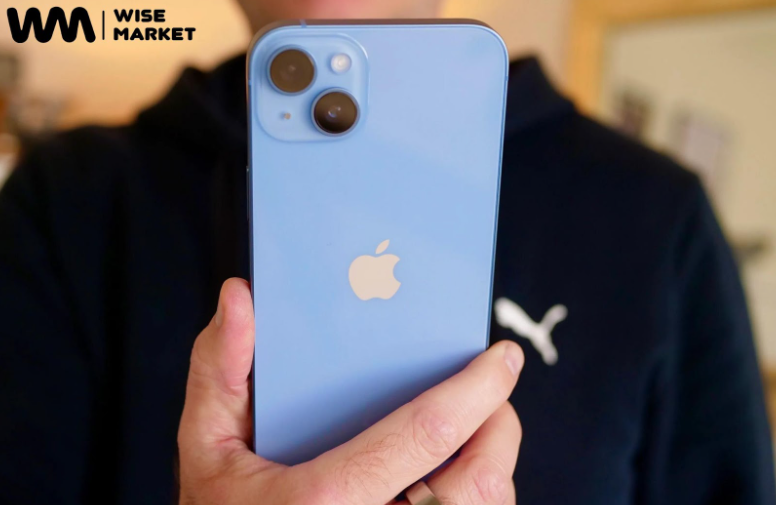Social media’s marketing plan is a document to plan your strategy which outlines what your objectives are as well as the steps you’re planning to take to reach them, and the way you’ll monitor your progress toward these goals. It assists in guiding your actions and provides the motivation that you require to stay on the right track.
In this thorough guide, we’ll walk you through how to develop an effective social media strategy that yields results.
1. Examine your current social media marketing performance
Before you begin to create your social media strategy to the next time, it is important be thinking about the present situation.
If you’ve been on social media for some time begin by looking at your progress to date. It’s important to find out:
- Which strategies are working for you? What strategies are working well and which ones aren’t?
- Which platforms on social media are you getting the highest results?
- Do you have a lot of fans? have on each of your platforms?
- What sort of percentage of engagement are you getting for your posts on social media?
- What does your brand’s sentiment appear like on social media?
- How does your performance stack up with your peers or industry benchmarks?
- Did you reach your goals from last year? If not, what did you do wrong?
Contribute your social media promos to Quuu Promote to give them an extra boost. The content marketing tool Quuu Promote will assist you in getting users who are actually interested in your content to view your promotions.
By getting your material shared and viewed by actual people, you can fully realize the potential of your social media promotion with Quuu Promote, a content marketing tool. You may optimize your material for maximum click potential before it’s shared with others by using Quuu Promote’s guided content marketing approach.
How to begin?
To evaluate your social media’s performance it’s worthwhile to invest in an tool for managing social media software If you don’t have one.
All-in-one social media tools such as SocialBee or Sendible as well as SocialBee have built-in analytics that will help you monitor your performance as well as uncover valuable data.
Utilize these tools to conduct your own audit, and see how your content’s performance in comparison to your objectives in the previous year and then highlight any areas you believe could have had more success or that require a change to be more effective in the future.
2. Set specific goals
After you’ve completed all of the above, you’ll have an picture of where you are currently in terms of your social media’s performance. You can now begin to contemplate where you’d like to go.
A well-thought-out social media marketing strategy starts by having clear, specific objectives. Think about this: what specifically do you want out of social media?
Perhaps, for instance, are trying to increase your brand’s visibility? Increase traffic to your site? Improve customer engagement? Produce leads that are of good quality?
Take the time to write your goals now, as they will form the basis of your overall marketing plan for social media.
How can I begin?
If you’re trying to define your goals, we’d recommend that you use the pyramid of goals. The goal pyramid is a way of breaking down your goals into three levels.
At the highest point of the pyramid, you will have your finalgoal. This is your ultimate goal — the general goals you wish to attain and the timeline in which you’ll reach these goals. The goals you set for your outcomes must always be SMART, specific, measurable and achievable and relevant. They should also be time-based:
- Your social media following will grow to 10,000+ within 12 months
- Enhance brand perception by boosting positive reviews from 40 percent to 60% in the next quarter.
- Get 1,000+ page views through social media every month, by the end of next year.
Once you’ve identified your end goal, you are able to break it in goals for performance goals. Goals for performance are the next step down the pyramid, and are smaller goals that are a part of the ultimate goal.
3. Determine your KPIs
Data is the key to any successful marketing strategy for social media. In order to measure progress towards your goals, you need to establish some KPIs (key performance indicators)–important metrics that reveal how well you’re performing.
Your objectives should guide you to the particular KPIs you should be monitoring. For example, if the final goal is to get 25percent more sales via social media, you’ll likely need to track KPIs like reach, click-through rates, or conversions.
Here are a few other instances of KPIs you could keep track of, based on your goals
- Reach / Impressions. These numbers provide you with the number of unique users who view your blog posts.
- Rate of engagement. Engagement can be calculated using the method of dividing engagement numbers (likes comments, likes.) with the sum impressions.
- Comments, likes shares, comments Shares, comments, likes, etc. In addition to the general percentage of users who engage, you can monitor individual engagement metrics like comments, likes and shares as well as retweets.
- Click-through rate. In the event that you’re making use of social networks to increase visitors towards your website’s landing page, then you’ll be interested in measuring the rate of click-through. This will tell you the percentage of people who visit your links, as proportional to the total number of views.
- Remarks about your brand. This will tell you how many instances your brand has been featured on the social networks. This will help you determine the extent of your brand’s visibility.
- Sentiment of the brand. This tells you what people think about your brand taking a look at the context in which your brand’s mentions, and whether they talk about you in a positive or negative, or neutral setting.
- Respond rate. This is a measure of how many social posts your team responds to and how quickly they’re responding. It can be an important KPI to monitor in the case of a goal that is focused on customer service.
- Share of Voice. This indicates what percentage in the online social media space your brand is in when compared to competitors.
How can I begin?
To monitor KPIs you’ll require the proper tools. It’s easy to do this using tools such as Iconosquare.
Both have robust social media reporting tools which can assist you in keep the track of every one of your KPIs.
4. Think about your audience’s needs and then select your platforms
Then, take some time to think about your audience. Think about who you are trying to reach via the social media advertising strategies?
Different audience segments use different social media platforms. For instance, platforms such as TikTok are popular with younger generations of consumers similar to Gen Z and Millennials, while older users tend to prefer Facebook over other social media platforms.
It is also crucial to take into account the way users interact with each of these platforms, and how it corresponds to your business objectives. For instance, many users consume their news on Facebook and Twitter however they would rather use platforms like Pinterest or Instagram for new products.
How can I begin?
Begin by putting together a complete buyer/target market persona. Be sure to include details such as their:
- Sex/Gender
- Age
- Location
- Interests
- Average income
- Favorite social media platform
- The type of content that is most popular
This can be helpful in designing the strategy for your social media. If you’re not certain which audience you want to target It can be helpful to analyze your current users.
5. Make sure you have a plan for your content and define guidelines for style and branding
We now know the goals and KPIs we’re aiming for are, and who we’re aiming at We can begin to create a content strategy. Your content strategy is likely the most crucial element that you have in the social media plan.
It will tell you the kinds of content you’ll post, and also provides general guidelines to guide your team. This is how you create it.
How to start?
There’s plenty to talk about concerning planning content and we’re not able to discuss all of it. Instead, we’ll try discuss two important components you’ll need to include in your content plan.
Mix of content
The term “content mix” refers to the various kinds of content you’ll post. Consider both the content and format (i.e. text updates, pictures narratives, longer- and short-form video or curated content, contests, etc.) and their goal (informational educational, entertaining, or promotional and so on. ).
You may want to consider using the 80-20 rule. This states the 20% that you post on your content should be designed to directly promote your company’s brand, while the remaining 20% should serve to entertain, educate or provide information.
Of course, you should make sure you have a mix of different formats for your posts to keep things interesting. Take note of the content you will post for each platform you wish to use in every format (e.g. on Instagram you could publish 50% photos and 20% Reels and 30 stories).
Brand guidelines for style
It is essential to be consistent in the world of social media. Set up some guidelines regarding style for your team members to ensure that the similar colors, themes and other elements of style are applied to all your social media posts that are visual.
One way to accomplish this is to make use of templates. It is possible to use design tools such as Visme to build customized templates and reusable content blocks that can be reused throughout your blog posts.
Make sure you are using the appropriate social media platforms
You’ll need to look at the platforms on which your customers are most active.
It’s likely to be beneficial to join platforms such as Instagram, TikTok, and Facebook regardless. Don’t overlook smaller niche platforms, and even communities-focused platforms such as Reddit.
Additionally, you might require rearranging certain aspects in your strategy for social media to accommodate the unique characteristics of each social media platform. It could also be beneficial to develop an individual strategy that is specific to certain social media platforms. For example, you could decide to develop an particular Facebook marketing plan.
6. Take into consideration the creation of new content types
A new year is a new beginning, and it’s important to consider this when preparing strategies for social media.
If you’ve noticed that your content was not achieving the results you hoped for in the past, or you’ve decided to focus on another goal, then you should think about which types of content most beneficial for your readers according to your new goals.
If, for instance, you post a lot of images-based content, you might consider making short videos. Particularly Instagram Stories.
Alternately, you can transform blog posts to make digestible social media posts, such as images, text or video.
There’s no one-size-fits all strategy for social media that works for companies. More than ever, it is crucial to test creative and novel content types to keep your audience interested and engaged with your content. Therefore, make sure you look outside the box when you are selecting the right content type and planning your next campaigns.
7. Create your content calendar
It’s not enough just to decide on the kind of content you’ll create. It’s equally important to create an overall social media marketing strategy that will determine when and how often you’ll post it to get the most reach and engage. This is the time to add your content calendar into.
The calendar shows the dates and times you’ll be posting content on different platforms. It can be used to outline strategies for social media, and plan your posts far ahead of time. It ensures that posts get distributed efficiently, and lets you post them at the right timing for your target audience.
8. Organise your team
In the realm of marketing via social media you have the option of taking one of two routes. You can handle every social account within the company or outsource a variety of jobs to virtual assistants, social media manager as well as content producers. Both options are viable but the option you select will depend on the needs of your business.
If you’re a small-sized business with a limited marketing and social media team outsourcing can be the most cost-effective and economical solution.
If you’re running more of a social media marketing department within your company and want to place a lot of emphasis in uniform branding and consistency, then managing your social media activities within the company is a better choice. Whatever route you choose it is essential to establish procedures in place that will ensure that all employees of your team are able to work together easily and effectively.
One way to accomplish this include using content calendars, such as the one we have mentioned previously in addition to using tools that aggregate all your social media activities into one simple-to-use email inbox.
9. Plan and think about your influencer marketing campaigns
Whatever your goals for social media are for the coming year connecting and working with influencers is something you seriously consider. Influencer marketing can assist you increase your reach and expand your reach. increase brand recognition and boost the image of your business.
Working with influencers is an excellent option for solopreneurs and brands alike However, it can be a challenging business, so there are a few factors to consider to ensure that your influencer marketing campaigns run without an issue.
In the beginning, you should ensure that you select an influencer with a good reputation and is an appropriate fit to your company. Selecting any influencer that has an impressive number of followers could mean draining your marketing budget the toilet. It is important to select influencers with an enormous influence on your field, and who are proficient in the creation of content and are a professional to collaborate with.
The presence of a solid plan for content and a style-related requirement for your brand set up will make collaborations with influencers more straightforward, however you must manage your campaigns with care to ensure that you achieve the desired results.
10. Create automations wherever possible
There are many different steps to consider when preparing the ideal strategy and then executing it. You must think about the creation and curation of content and interacting with influencers branding, linking, engaging with your followers… And the list is endless.
With all the micro-tasks to be completed it’s crucial to cut down on time wherever you can.
With the aid of tools to automate social media that you can automate some of the more labor-intensive aspects of marketing on social media, for example, responding to questions from your fans and other. Automation can be used to generate content by utilizing the information in an RSS feed on your blog.
But, before you appreciate the benefits of automation, you must create them using the tools that are most effective to achieve your business’s goals.
It’s ideal to finish prior to the start of the year as you’re completing your plan. Then, you can modify and enhance your automation over the course of the year, based on the changes in your strategy and the results.
11. Review results and make adjustments the results regularly
The key to creating an effective strategy for social media is understanding the things that are working and what’s not. This requires analyzing and improving your social media’s performance on a regular basis.
Whatever well-planned the content you create, you’ll not be sure of which way it’s going receive the approval of your followers. By keeping an check at your social media’s analytics You’ll know the very first learn if your campaign isn’t working as you’d like and then you can alter your strategies to include new ideas that are more suited to helping you succeed.
To analyze and improve your campaigns effectively You’ll need to select an application that provides data that is in line with your objectives.
Final thoughts
Making a successful social media strategy isn’t an easy task but by considering the issues in this article and creating the best social media tools stack, you’ll be able to develop the ideal social media strategy that will aid you in reaching your goals, no matter what they might be.
In the end, if you’re looking to develop your social media strategy take a look our blog post about the most recent trends and statistics in social media.















